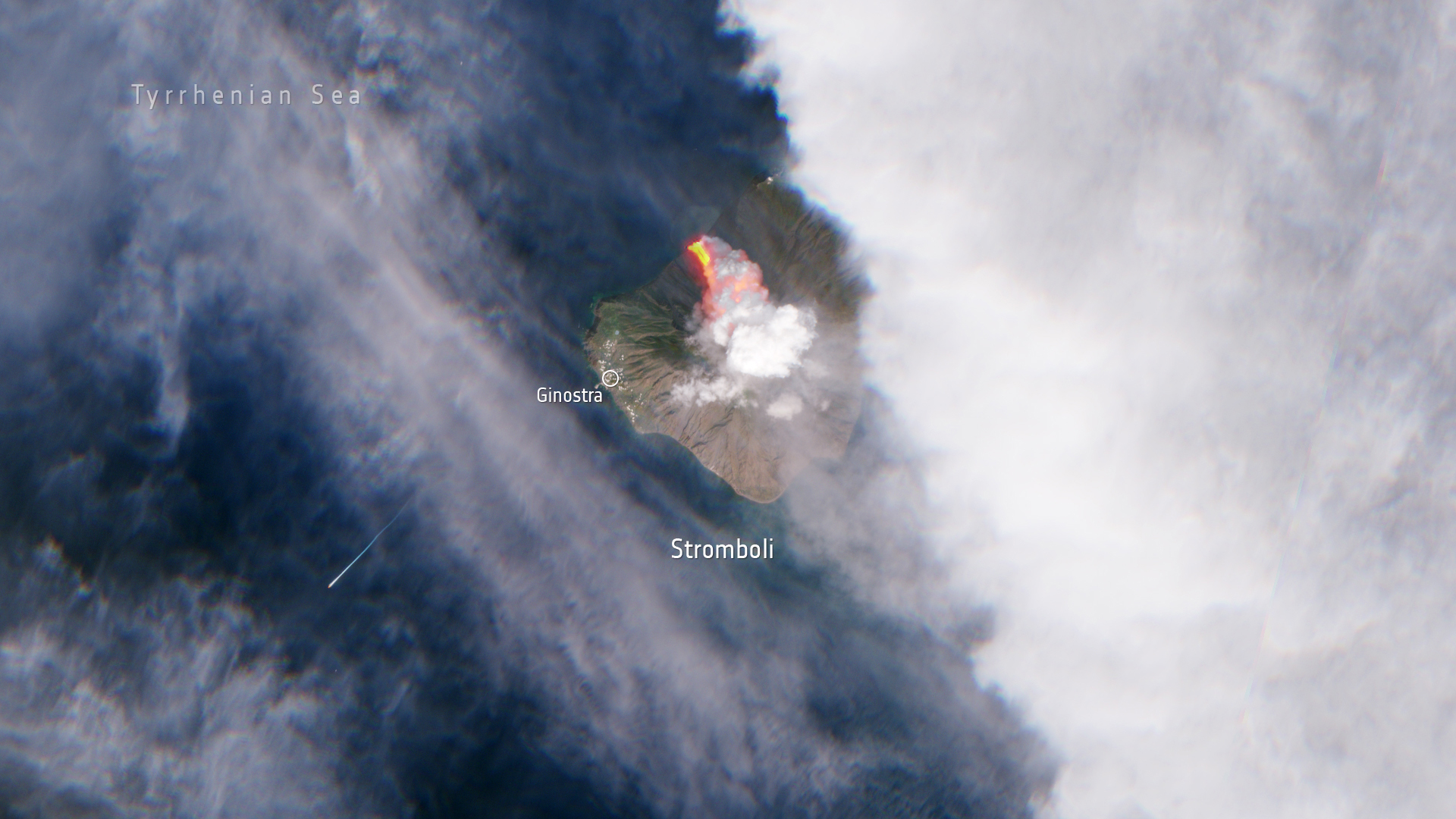Eruption of Italy's Stromboli volcano spotted from space
Europe's Copernicus Sentinel-2 mission passed above the volcano shortly after the eruption started.

Europe's Copernicus Earth-observing mission Sentinel-2 captured a striking image of Italy's Stromboli volcano less than five hours after it erupted early on Oct. 9.
The image, processed in true colors, shows lava pouring into the sea and huge plumes of smoke and ash rising above the volcano. The eruption caused the partial collapse of the volcano’s crater terrace, according to a statement from the European Space Agency (ESA), and prompted the Italian civil protection authorities to raise an orange alert due to the persisting "situation of enhanced volcano imbalance."
Related: How satellites have revolutionized the study of volcanoes
The Stromboli volcano and its namesake island are located in southern Italy, just off the northern tip of the island of Sicily in the Tyrrhenian Sea. About 300 full-time inhabitants live on the island, most in the village of Ginostra, which is marked in the satellite image to the southwest of the volcanic cone.
The volcano has been erupting frequently during the past 90 years making it one of the most active volcanoes in the world.
On the same day when the latest eruption started, the Sentinel-2 satellite also spotted "hot areas" on the Mount Etna volcano in Sicily, which is located only about 60 miles (100 kilometers) away from Stromboli. The satellites detected a hot plume but no lava erupting from Etna, which is as active as Stromboli. In May 2021, the two volcanoes erupted on the same day, suggesting a link between the two may exist, although scientists believe that the two volcanoes are separate, unconnected systems, each with its own pattern of erupting and magma generation.
The Sentinel-2 mission consists of the Sentinel-2A and Sentinel-2B Earth observation satellites which, in turn, are part of the Copernicus Program run by the European Union and ESA. The Sentinel-5P satellite was involved in assessing the scale of the recent Nord Stream gas pipeline leak.
Get the Space.com Newsletter
Breaking space news, the latest updates on rocket launches, skywatching events and more!
Follow us on Twitter @Spacedotcom and on Facebook.
Join our Space Forums to keep talking space on the latest missions, night sky and more! And if you have a news tip, correction or comment, let us know at: community@space.com.

Andrew is a freelance space journalist with a focus on reporting on China's rapidly growing space sector. He began writing for Space.com in 2019 and writes for SpaceNews, IEEE Spectrum, National Geographic, Sky & Telescope, New Scientist and others. Andrew first caught the space bug when, as a youngster, he saw Voyager images of other worlds in our solar system for the first time. Away from space, Andrew enjoys trail running in the forests of Finland. You can follow him on Twitter @AJ_FI.









